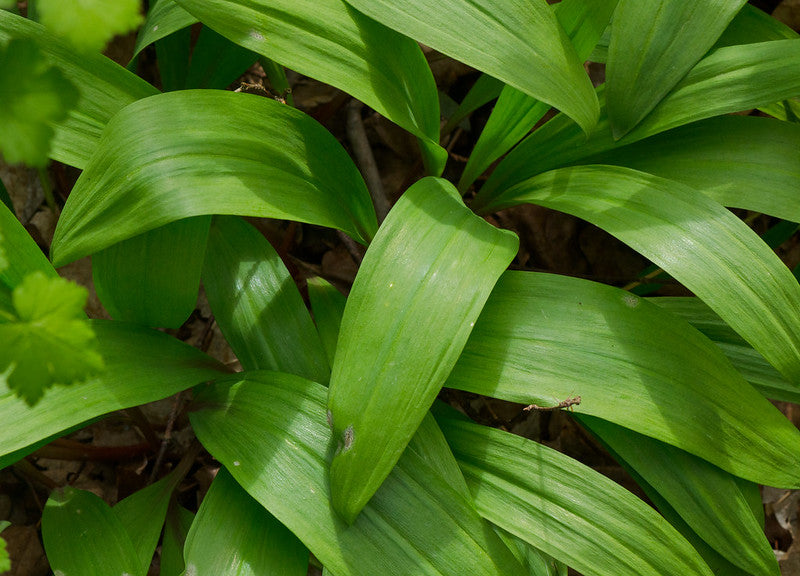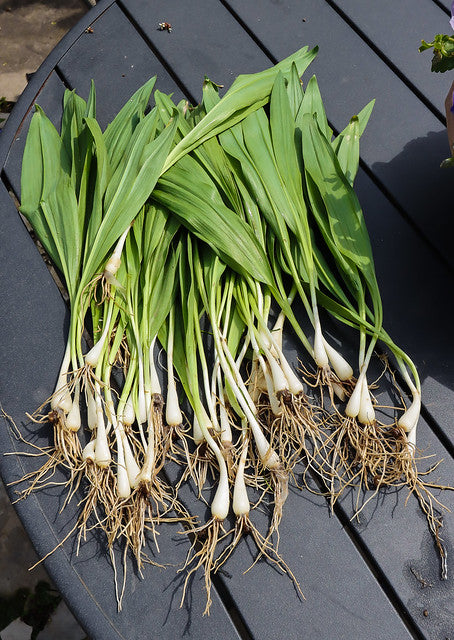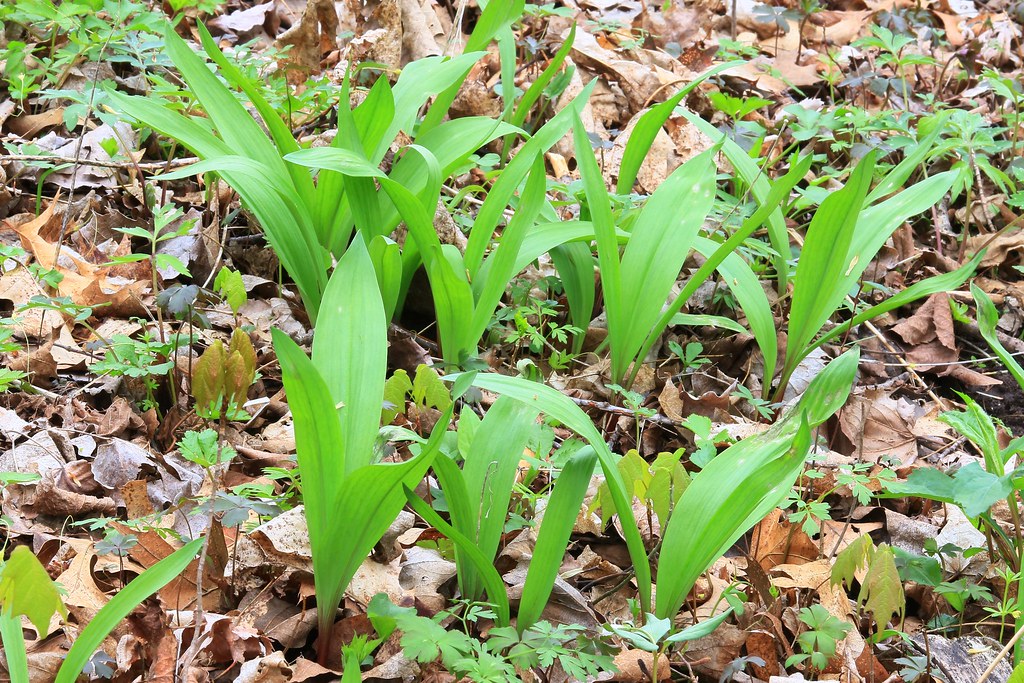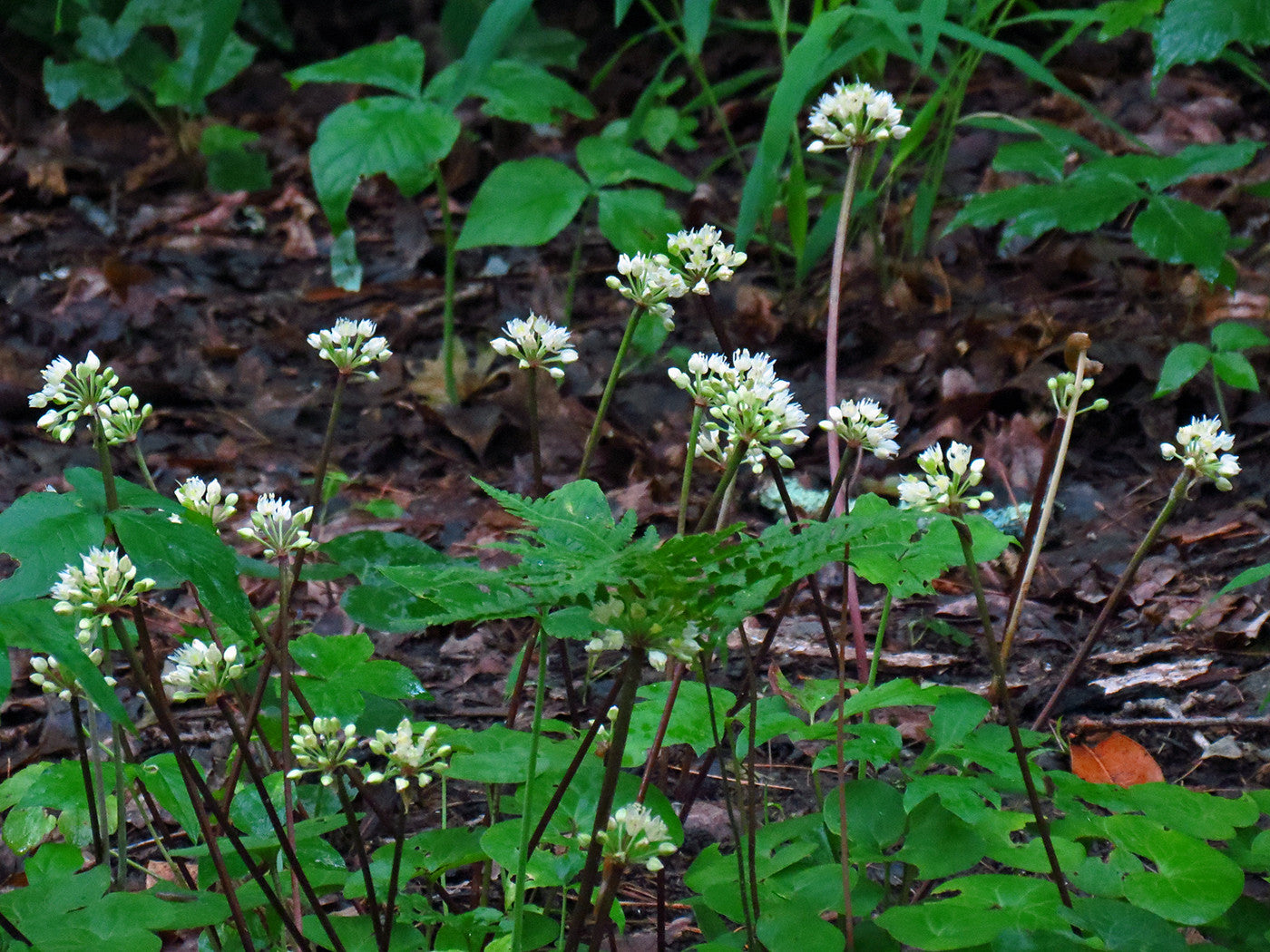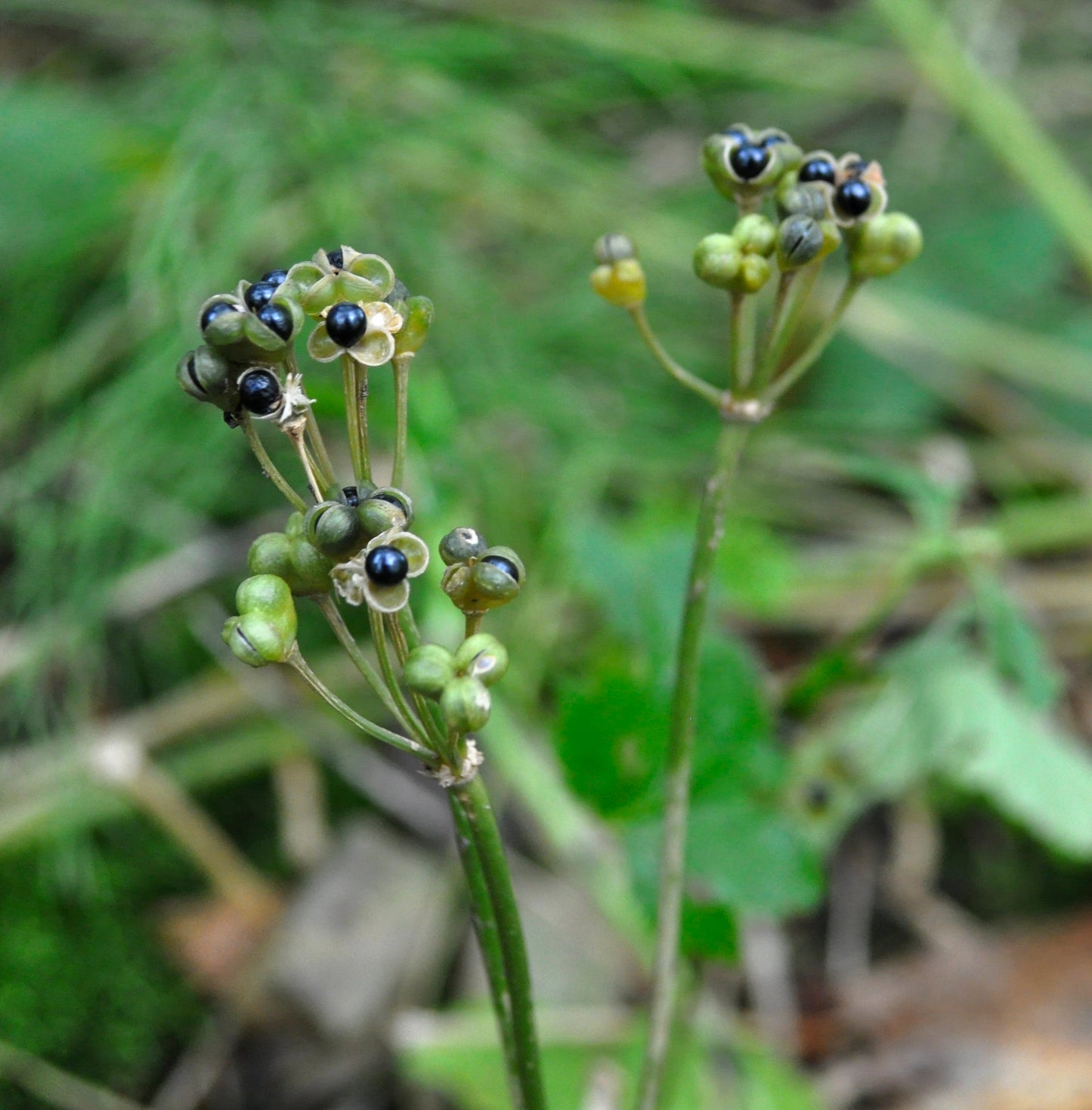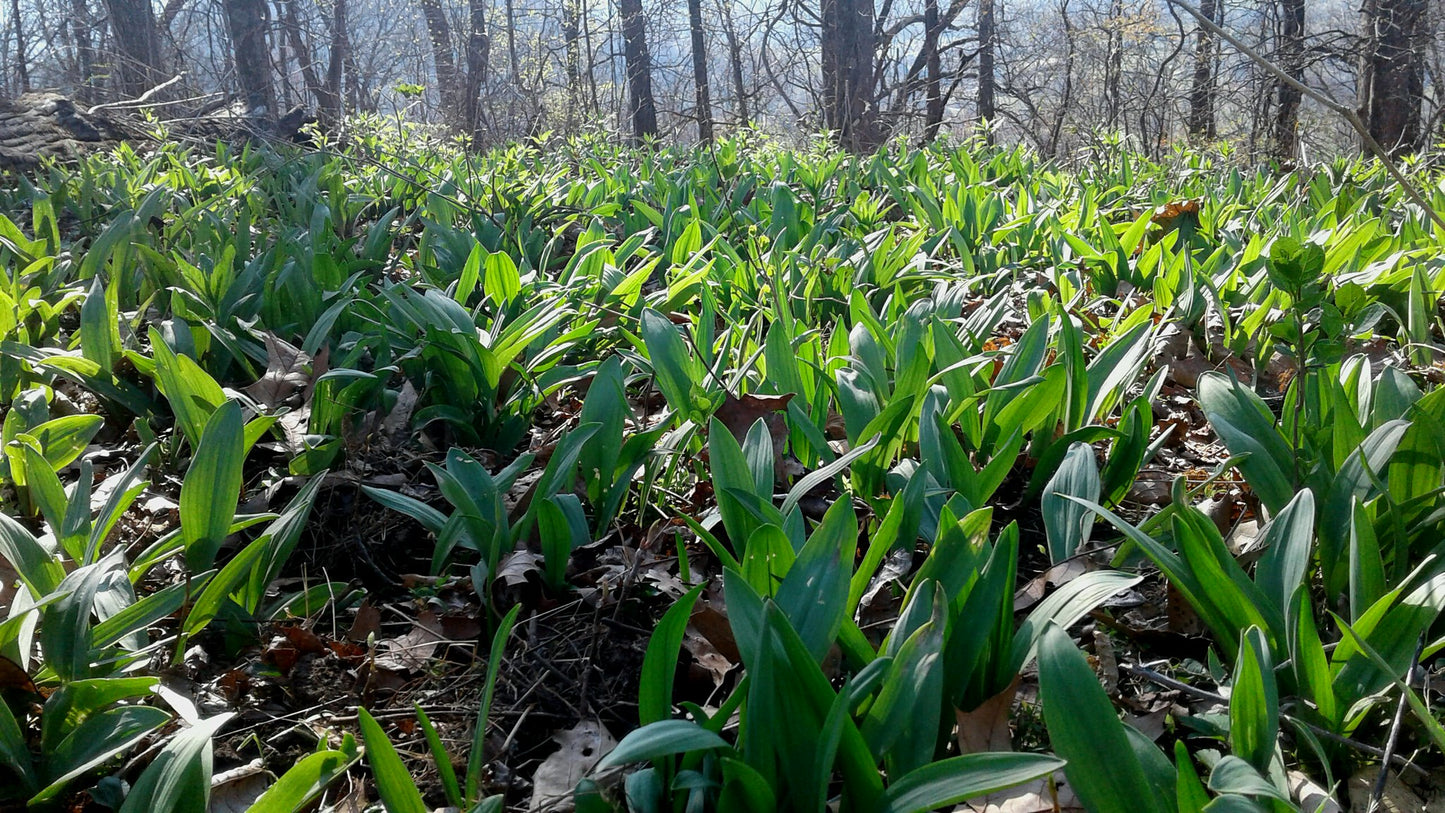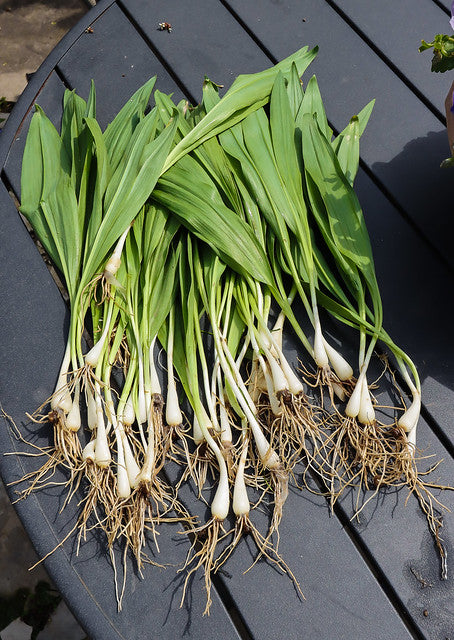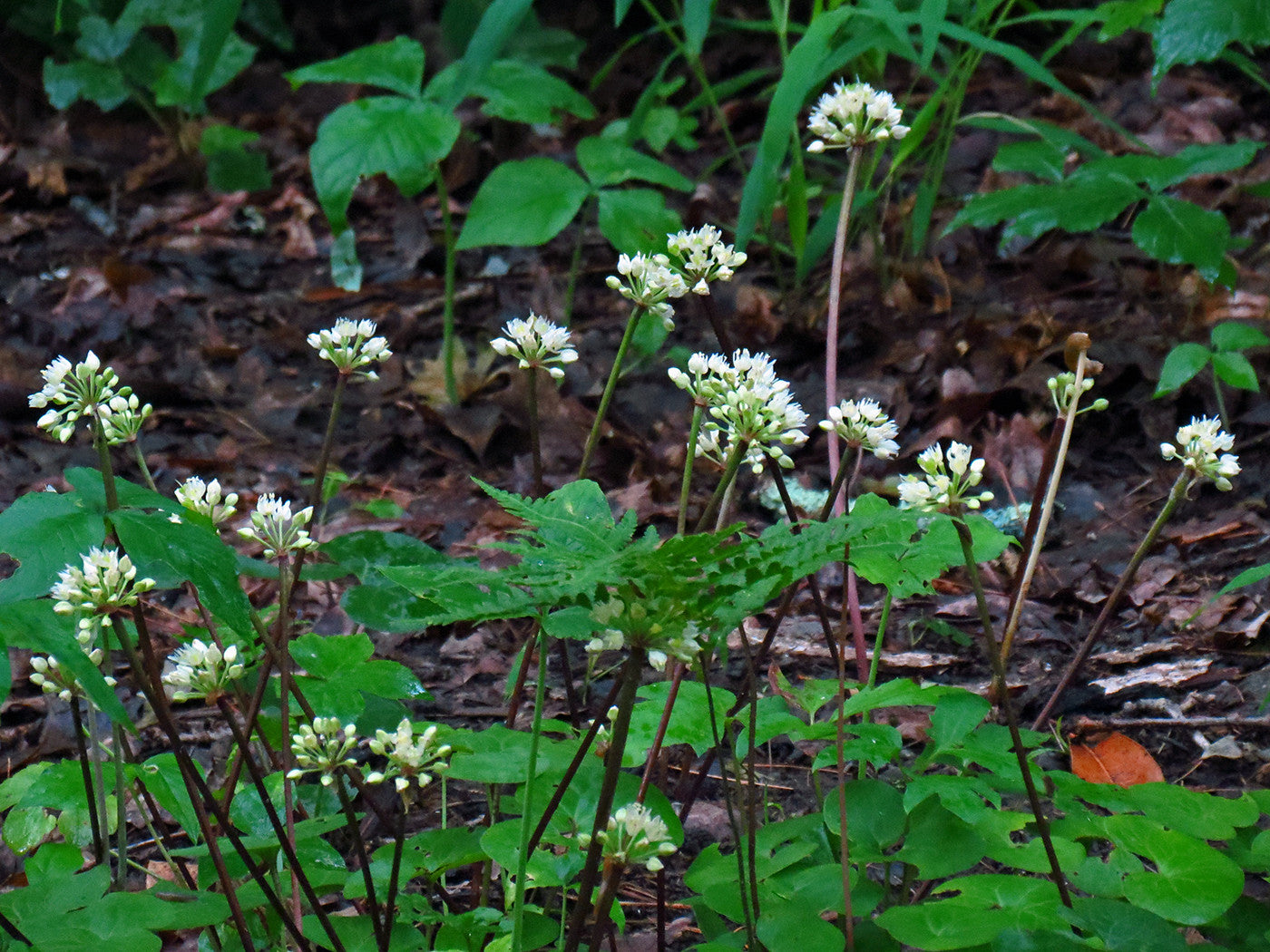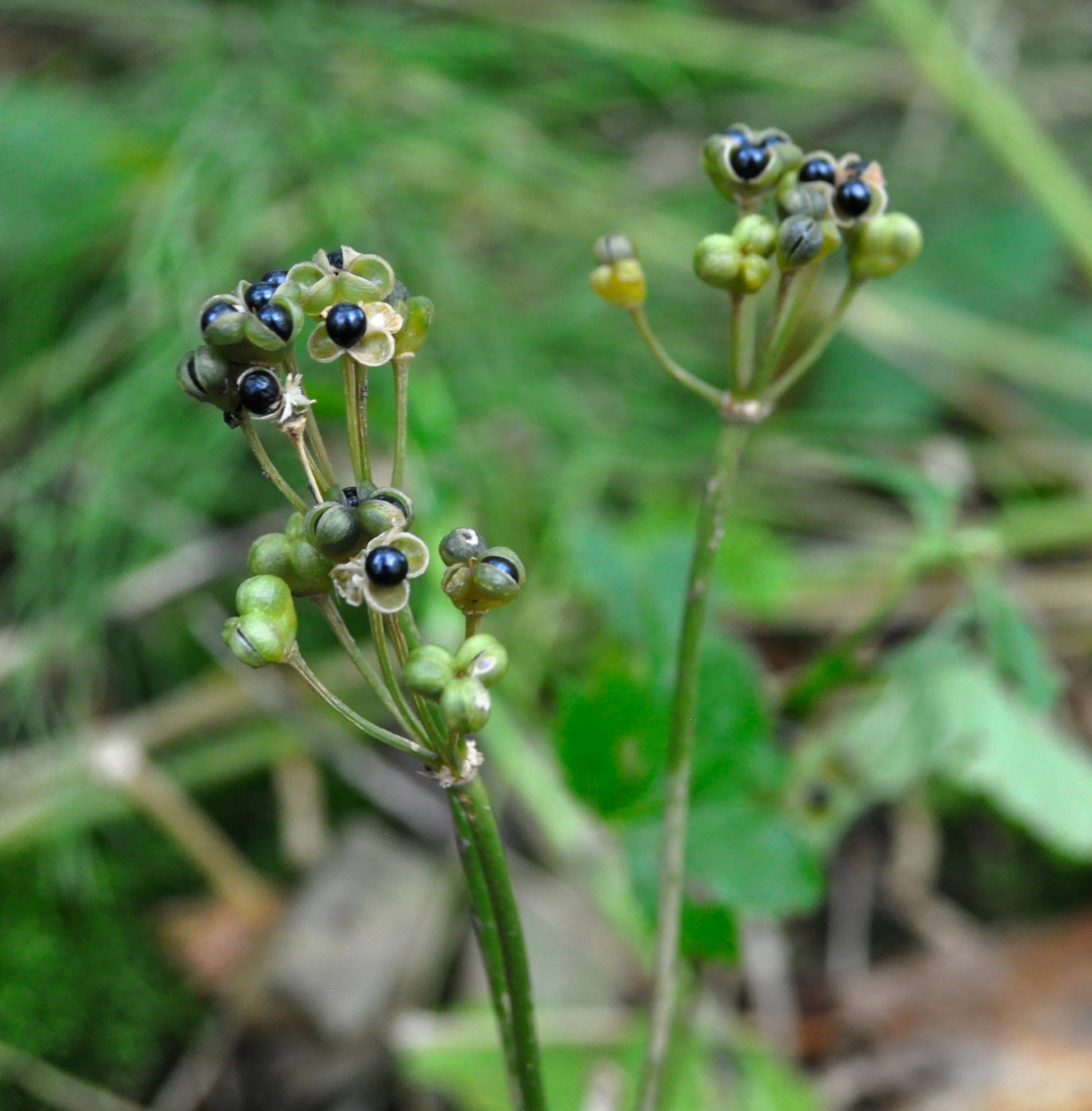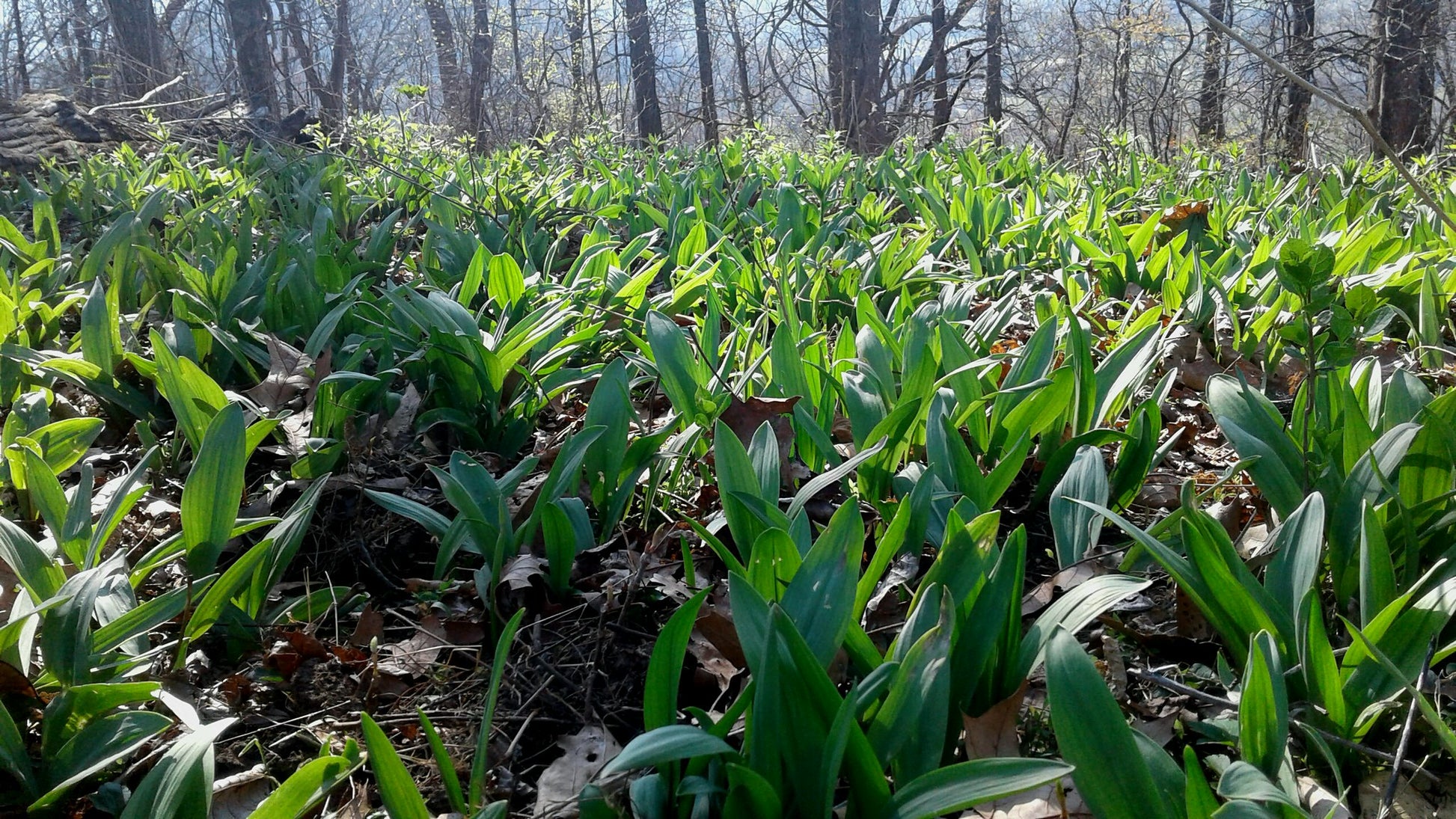Floridaseeds
Wild Leek Allium tricoccum 100 Seeds USA Company
Wild Leek Allium tricoccum 100 Seeds USA Company
Couldn't load pickup availability
Allium tricoccum, commonly known as ramps, wild leeks, or wood leeks, is a wild edible plant that belongs to the Allium genus in the Amaryllidaceae family. Ramps are native to eastern North America and are highly regarded for their culinary and cultural significance. Here's some information about them:
Appearance: Ramps are perennial plants with broad, smooth, and lance-shaped leaves. They have a distinctive onion-like smell and taste. The leaves emerge in early spring and can range in color from bright green to reddish-purple. Later in the season, ramps produce flower stalks with small white flowers that are arranged in umbrella-like clusters. The entire plant is edible, including the leaves, stems, and bulbs.
Habitat: Ramps are typically found in rich, moist, and shaded woodland environments. They often grow in clusters and can create lush patches on the forest floor. Ramps prefer well-draining, humus-rich soil and thrive in areas with a deciduous tree canopy.
Culinary Use: Ramps are highly sought after by chefs and food enthusiasts for their unique flavor, which is a combination of onion and garlic. They are often used in a variety of dishes, such as salads, soups, sauces, and even pickles. The leaves can be used like an herb, and the bulbs are used similarly to onions or garlic. Due to their popularity and limited availability, there are concerns about overharvesting, so sustainable foraging practices are encouraged.
Harvesting: Harvesting ramps should be done responsibly to ensure their continued growth and sustainability. When foraging ramps, it's recommended to harvest only a small portion of a patch, leaving the majority of plants undisturbed to reproduce and grow for future years. This helps prevent the depletion of wild ramp populations.
Conservation Status: Ramps have faced challenges due to overharvesting and habitat destruction. Because of their popularity in cuisine, their populations in some regions have declined. Efforts have been made to promote sustainable foraging practices and to protect ramp habitats.
Cultural Significance: Ramps hold cultural importance for various indigenous communities in North America. They have been used in traditional foods and medicines by different Native American tribes. In recent years, ramp festivals and gatherings have gained popularity in some regions as a celebration of spring and local food culture.
Growing Ramps: If you're interested in cultivating ramps, it's important to do so responsibly and with consideration for their natural habitat. Ramps can be challenging to grow because they require specific soil and shade conditions. They are slow-growing and take several years to establish from seeds or bulbs. If you're considering growing ramps, it's advisable to seek guidance from local experts or horticulturists familiar with your region's conditions.
Overall, ramps are not only a culinary delicacy but also hold ecological and cultural significance. When enjoying ramps, whether foraged or cultivated, it's important to do so in a way that supports their sustainability and the preservation of their natural habitats.
Growing Instructions
Preparation: Ramps prefer growing in rich, well-draining soil with a high organic content. Prepare the planting site by clearing away any debris, weeds, or competing plants. Choose a shaded area that mimics their natural woodland habitat.
Sowing Seeds: Sow the ramp seeds on the soil surface in the prepared area. Press them gently into the soil without covering them, as they require light to germinate. Aim to sow the seeds in the fall, allowing them to experience natural temperature fluctuations over the winter.
Mulching: Cover the seeds with a thin layer of mulch, such as leaf litter or straw. This will help conserve moisture, regulate soil temperature, and protect the seeds from harsh weather conditions.
Watering: Keep the soil consistently moist but not waterlogged. Use a watering can or gentle setting on a garden hose to water the area. Be careful not to disturb the seeds while watering.
Germination: Ramps are known for slow and irregular germination. Some seeds may germinate in the first year, while others might take longer. Be patient and provide appropriate care.
Thinning: If multiple seedlings emerge close together, you might need to thin them out to give each plant enough space to grow. Transplant the seedlings you remove to other suitable locations if desired.
Care: As the seedlings grow, continue to provide consistent moisture and protect them from direct sunlight. Over time, the seedlings will develop into mature ramps.
Maturity: Ramps are slow growers and may take several years to reach maturity. It's not uncommon for them to take 4 to 7 years or more to develop a bulb of harvestable size.
Harvesting: Once the ramps have reached a suitable size, you can harvest some leaves and stems for culinary use. However, always practice responsible harvesting by leaving a significant portion of the plant undisturbed to support future growth.
Materials
Materials
Shipping & Returns
Shipping & Returns
Dimensions
Dimensions
Care Instructions
Care Instructions
Share
